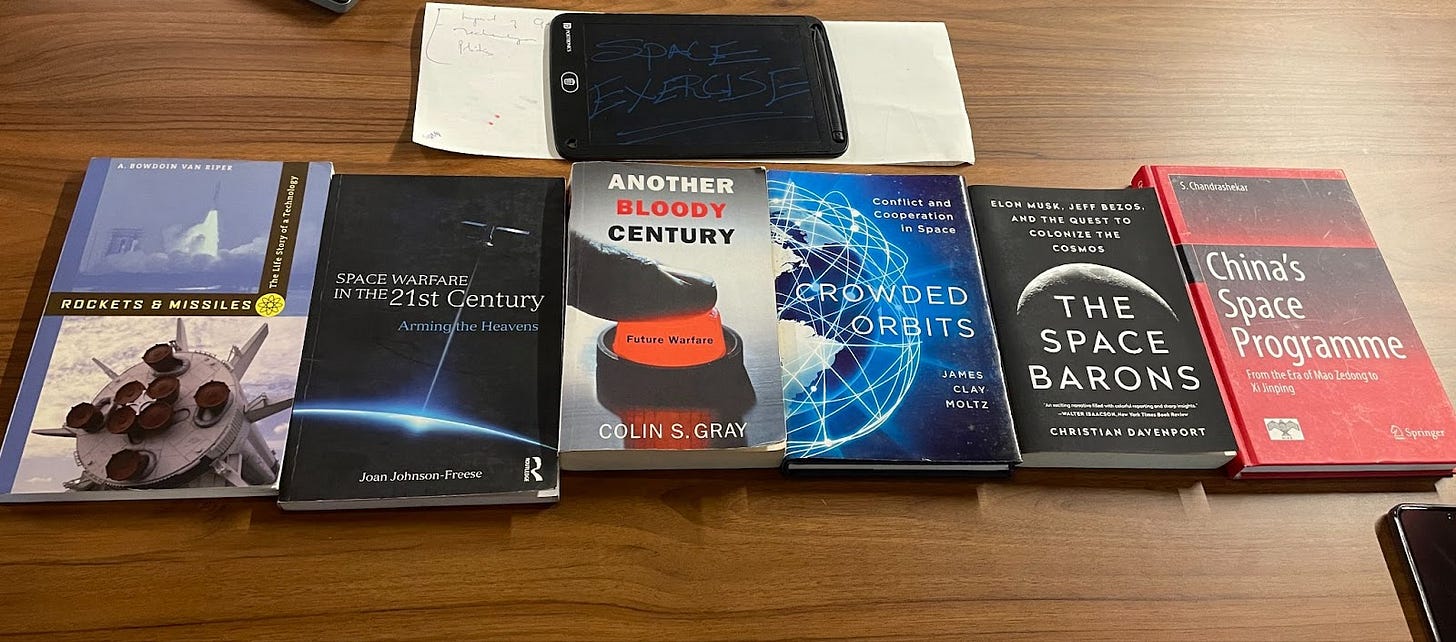The Simon and Garfunkel of the AI Chip World?
“We’ve made plans to meet again. Will Paul bring his guitar? Who knows. For me, it was about wanting to make amends before it’s too late. It felt like we were back in a wonderful place. As I think about it now, tears are rolling down my cheeks. I can still feel his hug.”
In the 1970s, widely acclaimed folk-pop duo Paul Simon and Art Garfunkel released their final album, Bridge over Troubled Water, which went on to win the Grammy Award for Best Album of the Year in 1971. At the height of their fame however, the duo broke up.
With a friendship that began when they first met in school in the early 1950s, the duo was catapulted to the mainstream when their first album was released in 1964. Six years later however, they threw in the towel after their final album was released.
In his memoir, Paul admits that he took offence to Art’s foray into acting and Art took offence to Paul’s decision to record as a solo artist early on in their career. While they briefly reunited for special and rare performances over the years, it was evident to fans and foes alike that the wounds of their ruptured relationship still ran deep.
Both couldn’t deny however that when they worked together, they had the potential to create something special and meaningful to their fans. And 54 years later, an interview with Art Garfunkel last week, reveals that the two musical legends have built their own bridge over troubled water and reconciled, as the opening quotation of this Dispatch testifies.
I’d venture to say that Takshashila too boasts a talented duo who’ve put their heads together to bring you something special: A definitive primer to AI chips. And better still, they didn’t need to win a Grammy and have a public estrangement to get there.
Research Analysts from the Takshashila High-Tech Geopolitics Programme, Satya Sahu and Ashwin Prasad have done the hard work on developing an explainer on AI chips that may well win an AI-chip Grammy, if such an award existed.
For readers with a keen interest in the world of AI technology, it comes as no surprise that the rise of Machine Learning, Deep Learning, and Natural Language Processing, has corresponded with an increase in the demand for specialised AI chips.
This primer that Satya and Ashwin have co-developed now allows you to deep dive into understanding the key components of AI hardware (which in turn affect the development of AI technologies).
Read their insightful (and dare I say comprehensive) analysis here.
P.S.: If you’d like to listen to the title track from Simon and Garfunkel’s famed last album, click here.
To Infinity And Beyond: Space Tech’s Supply Chain Aspirations
“Space technology supply chains are not global. They should be” writes Ashwin Prasad, Takshashila Research Analyst from our High-Tech Geopolitics Programme. But what could be the reasons for Ashwin’s emphatic assertion?
In his recent Op-Ed for Deccan Herald, Ashwin argues for why considerations around reducing costs, enabling specialisation, facilitating innovation, increasing production rates, and promoting geopolitical stability should be top of mind for the space sector. He advocates for expanding space technology supply chains, across allied geographies of the US, India, Japan and South Korea.
Take a closer look at his thorough analysis and recommendations here.
Countries are however fairly united in their concerns around Antimicrobial Resistance. If you’re not sure what all the fuss is about, read on to the next section.
What’s the Big Fuss About Antimicrobial Resistance (AMR)?
If you watch the Good Food Movement’s recent documentary on how food is contributing to Antimicrobial Resistance (AMR), you may notice a familiar face sharing a starting statistic on AMR. Takshashila Head of Research and Chairperson of our Advance Biology Programme, Shambhavi Naik, notes that 700,000 people die each year due to AMR or AMR-related issues.
Further, she highlights the conditions under which AMR develops, the role agriculture plays in contributing to AMR and potential responses to this pressing health issue. For an overview of the various considerations related to AMR, watch the entire documentary at this link.
AMR is not the only issue that’s causing a bit of stir internationally. It should come as no surprise that we turn next to the U.S.-China bilateral partnership and how it will fare under the new U.S. political leadership.
What Does Trump’s Presidency Mean for China? (and Others?)
All eyes are on the U.S.-China relationship, particularly in light of the U.S.' new Trump presidency. What could this important bilateral relationship look like under the new administration? Lucky for you, dear reader, our brightest minds are here to unpack this question for you.
Chair of our Indo-Pacific Studies Programme, Manoj Kewalramani, is here to give you some quick highlights of the key implications of this partnership (in just under two minutes!), in a new Attention Span episode, seen here.
If you’re keen to understand the U.S.’ relationships with countries beyond China alone, Takshashila Director, Nitin Pai, has penned an Op-Ed for his column in The Mint on this very subject. You’ll find more of his commentary at this link.
Now that we’ve expanded your knowledge of the U.S.’s international relationships, how about we invite you into the world of Southeast Asian geopolitics?
Should India Take a Leaf Out of South Korea’s Playbook?
This is the exact question Geoeconomics Programme Research Analyst, Anisree Suresh, asks in her latest discussion document. She undertakes a critical analysis of South Korea’s industrial policy, highlighting their role in economic growth and the flaws that led to the 1997 crisis.
Lucky for us, she then helpfully draws several lessons for India, namely how to balance state support with competition, empower Small and Medium-Size Enterprises, and focus on sustainable, export-led growth, where she cautions against:
“...directly replicating South Korea’s industrial policies, especially in the context of India’s current "Make in India" and Production Linked Incentive (PLI) schemes. While these initiatives aim to boost foreign direct investment (FDI) and create large, globally competitive firms…they risk encouraging inefficiency through protectionism and financial incentives.
For India, the her analysis advocates for:
“...a shift towards export-oriented growth that prioritises competition, innovation, and integration into global value chains. It also stresses the importance of reducing excessive state intervention, fostering a level playing field for businesses, and creating an environment that encourages sustainable, innovative, and efficient industries.”
You can take a closer look at the document published on the Takshashila website here or see highlights of her findings at this link.
South Korea is not the only country that has caught Anisree’s eye. She’s taking on the India-Australia bilateral partnership in the next section showcasing our ATP episode of the week.
All Things Policy Spotlight: Contours of The India-Australia Partnership
This week’s All Things Policy episode we’d like to highlight for your benefit is one between our own Anisree Suresh and Professor Ian Hall, Professor of International Relations from Griffith University and Academic Fellow of the Australia India Institute at the University of Melbourne, as they follow the contours of the India-Australia bilateral partnership.
They focus their discussion on the complex economic and strategic elements of the partnership, including its notable trade relationship (with India holding the role of Australia's fifth largest trading partner).
Click here to be a fly on the wall as they have an insightful conversation on the above.
If insightful conversations on trade are your cup of tea, wait till you see the next section.
In Conversation with None Other Than… Montek Singh Ahluwalia
Last week we had the distinct pleasure of hosting renowned economist, Montek Singh Ahluwalia, in conversation with Takshashila Co-Founder, Narayan Ramachandran, at the Takshashila office in Bengaluru.
Mr. Montek took the time to share some astute insights on the future of global trade and the implications of the climate transition globally. See highlights of our time together at this link.
Apart from the enlightening conversations we’re hosting at the Takshashila office, we have a list of enlightening reads too. Continue onward to the awaited ‘Takshashila Tabletop Trove’ section!
Takshashila Tabletop Trove!
For regular readers of the Dispatch, this section needs no introduction, but for our newer viewers, I’ll have you know that this section is intended to be a digital repository of the books that sit in Takshashila’s physical office space in Bengaluru, Karnataka. So what’s this week’s book theme? Read on!
This week’s theme has been curated in line with The Bengaluru Space Exercise hosted by Takshashila this past week, which brought together experts from the armed forces, government and industry for an immersive experience on outer space governance.
We honour of this event, we recommend the following books, curated by our very own Research Analyst, Rakshith Shetty:
Rockets and Missiles: The Life Story of a Technology (A. Bowdoin Van Riper)
Space Warfare in the 21st Century: Arming the Heavens (Joan Johnson-Freese)
Another Bloody Century (Colin S. Gray)
Crowded Orbits: Conflict and Cooperation in Space (James Clay Moltz)
The Space Barons: Elon Musk, Jeff Bezos, and the Quest to Colonize the Cosmos (Christian Davenport)
China's Space Programme: From the Era of Mao Zedong to Xi Jinping (S. Chandrashekar)
But Wait, There’s More!
We’re also keeping a keen eye out for a new Assistant Programme Manager to join Takshashila’s Policy School. Know of anyone who has stellar organisational and communication skills? Who enjoys the thought of delivering an awesome learning experience to students making their first foray into the world of public policy? If the answer is yes, encourage them to apply here.
This edition of the Dispatch was written by Kripa Koshy, Programme Manager for Takshashila’s Post Graduate Programme in Public Policy.





